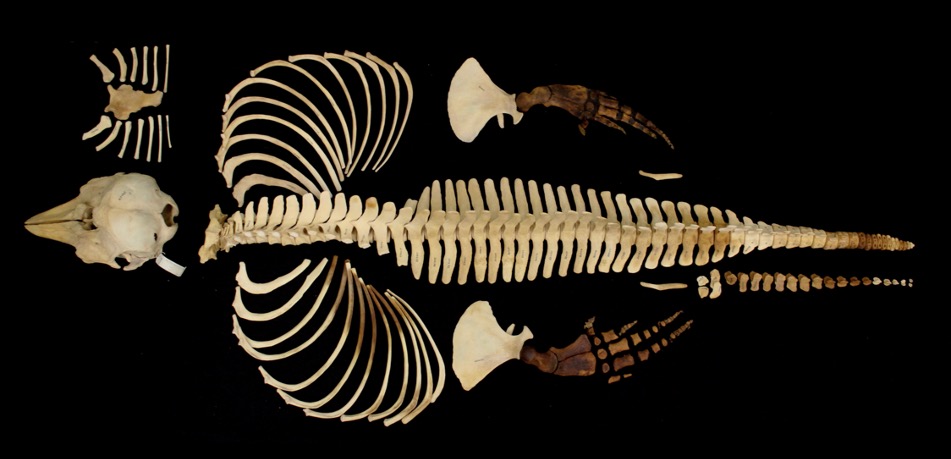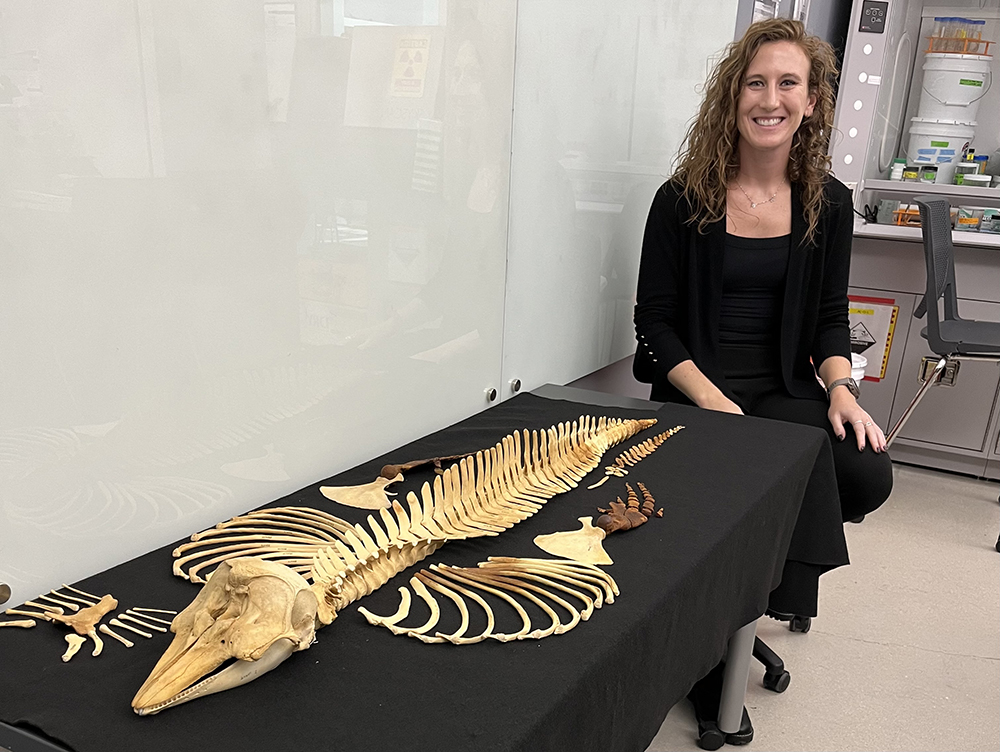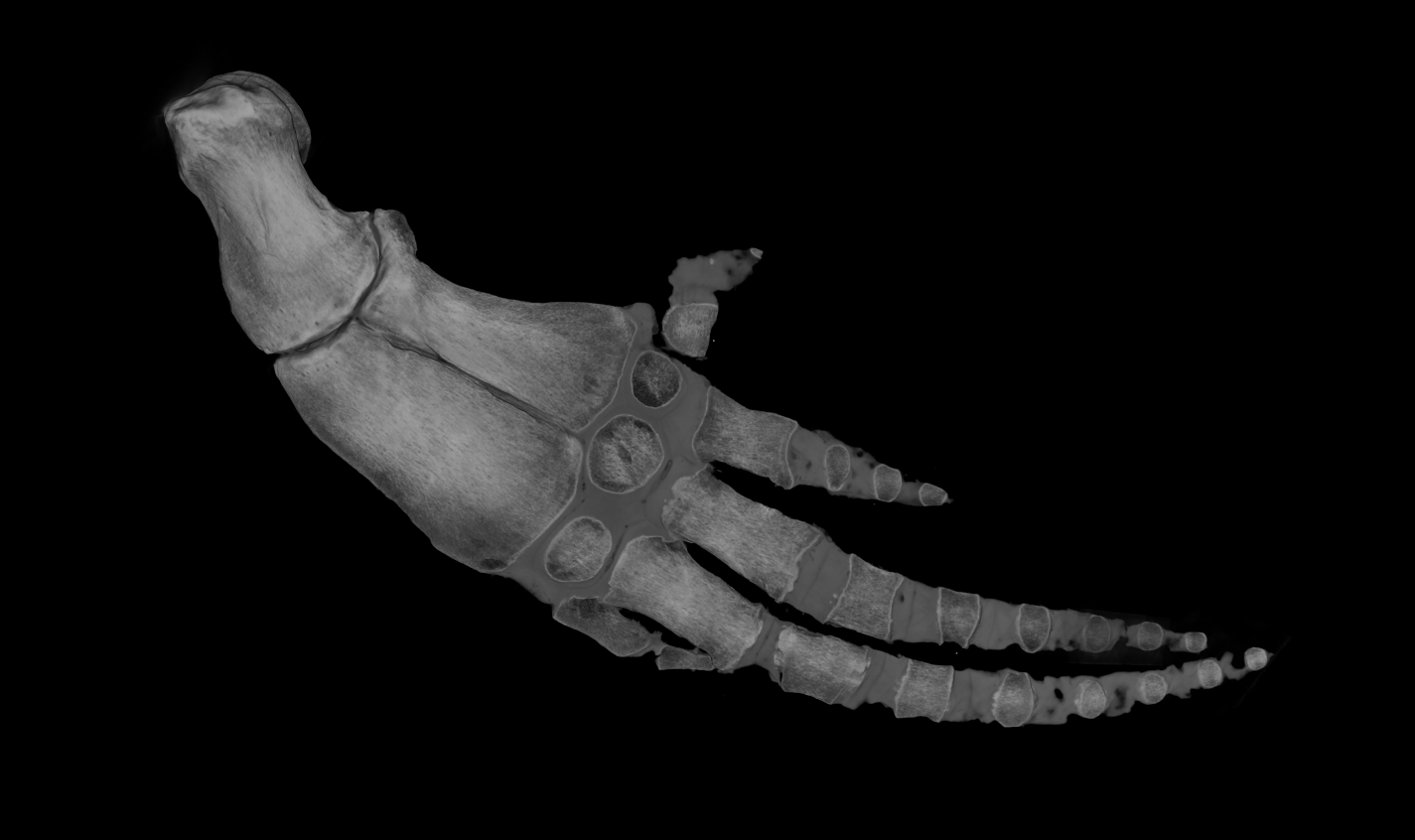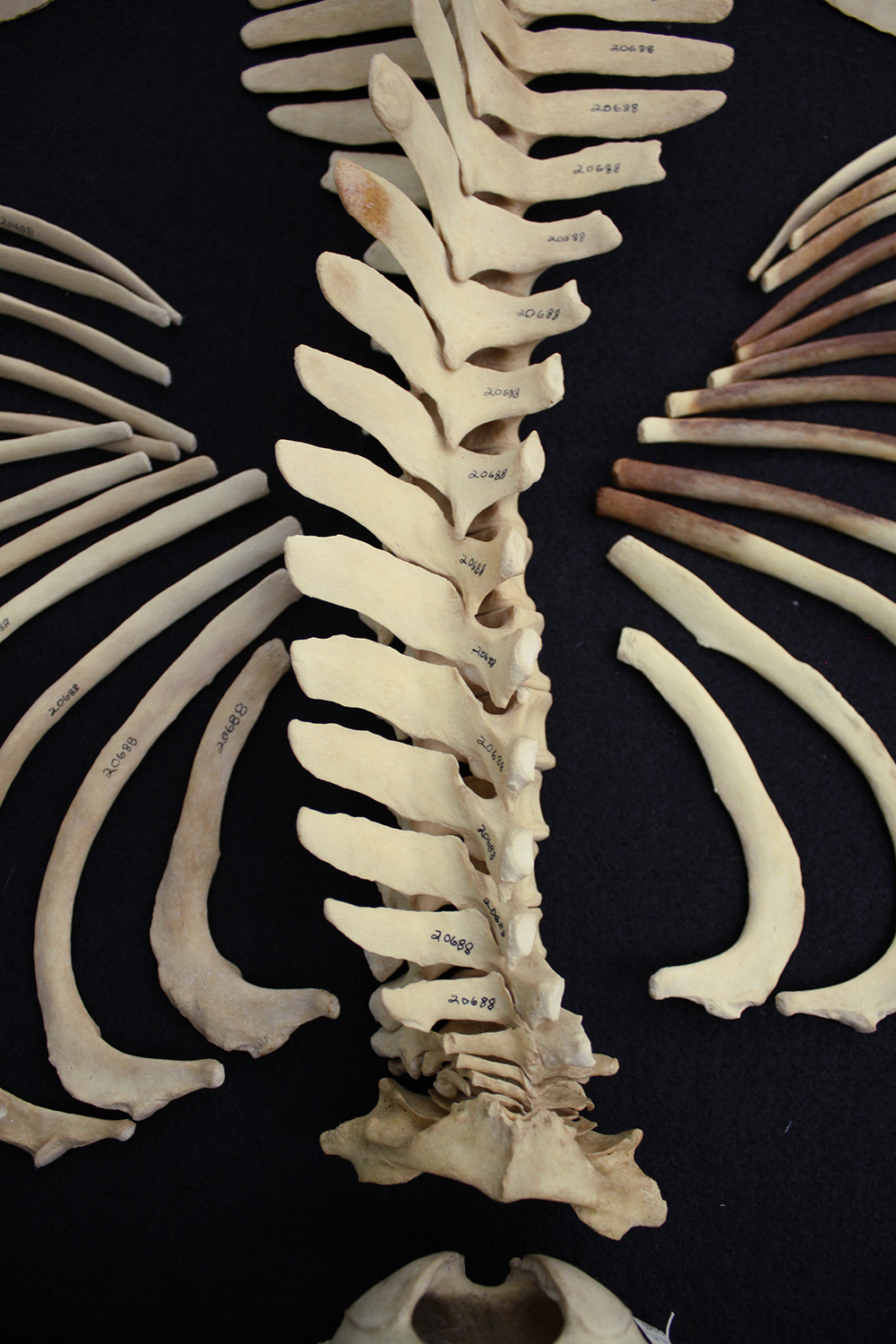
Author: Kristan Reynolds
Date: 2/18/2025
When going through TSA at the airport, most people worry about their body wash exceeding the liquid limit — but for Florida Atlantic University Ph.D. candidate Jamie Knaub, the concern was a skeleton of the world’s smallest porpoise, known as a vaquita, packed in her carry-on bag. She had all the necessary paperwork, but would that be enough to satisfy the TSA inspectors?!
Knaub, a researcher in the Florida Atlantic Biomechanics (FAB) Lab, collaborated with Brittany Aja Dolan from SeaWorld San Diego, on a project to scan this rare skeleton using a micro-CT scanner, to create a digital preservation of the specimen. The vaquita is also critically endangered, as classified by the International Union for Conservation of Nature (IUCN), meaning it is at “extremely high risk of facing extinction in the wild.”
When Knaub first received the email about scanning the skeleton from Dolan, she physically jumped out of her seat in excitement. “I don’t think many marine mammal scientists get a chance to study them, because they are incredibly endangered and rare. So, to have digitized an entire skeleton, at such an early career stage in my career, made me truly blessed to be involved in preserving biological data on this species,” Knaub said.
Vaquita translates to “little cow” in Spanish, as they reach a length of only 4-5 feet. According to Knaub these creatures only live in the Gulf of California and often avoid boats, making it difficult to observe and assess their population in detail. “I think they’re a little gothic looking and adorable,” she said about the black coloration residing around their eyes and mouth.
|
picture credit: NOAA Fisheries |
While adorable, Knaub notes that vaquitas are at risk of extinction due to gillnet fishing, a once popular way to catch fish using a wall of netting that traps fish by their gills. Mexico made a permanent ban on gillnets in the Gulf of California in 2017, specifically due to their threat to the vaquita population and risks to other marine species like sharks and sea turtles. However, this ban doesn’t mean that vaquitas are out of the danger.
Vaquitas are still “at risk of entanglement and death as bycatch due to illegal gillnet fishing that occurs at night in their home range for an endangered bony fish called the Totoaba. That fishes’ dried swim bladder is worth crazy money on the black market,” Knaub noted. Even though the vaquita isn’t the target, it — along with other species — can still get trapped in the nets.
With their at-risk population, Knaub says that digitizing the vaquita skeleton is extremely important for preserving evidence for their unique morphology. “3D images like the Vaquita scans can be used for future research, education, outreach, and conservation efforts,” Knaub said. “These digitized portraits are easily transferable, which makes them highly accessible around the world!”

Knaub was able to scan the vaquita skeleton using a Micro-CT scanner in The Owls Imaging Lab at FAU High School. This instrument uses the same technology as a CAT scan. It works by taking thousands of high-resolution 3D x-rays from various angles. Since Knaub was working with a non-living specimen, she could push the technology “to the maximum” without worrying about the radiation exposure that would be detrimental, had she been working with a living animal.
“Once the scan is done, you can view external and internal features without physically cutting into the specimen” Knaub said, referring to what they termed a ‘digital dissection.’ “This makes it great for delicate and rare specimens, because you can study them in a non-destructive way.”

The next goal for Knaub and her colleagues at SeaWorld San Diego and the San Diego Natural History Museum, is to upload the vaquita scans to a public, open-source repository. After the upload, “everyone and anyone who wants to can see and use these images” Knaub noted.
Their next endeavor includes working with Bone Clones, a company that can use the CT scans to create anatomically accurate replicas of the entire skeleton. “This replica will be available for purchase so other museums, universities, institutions, educational/outreach centers, and even the public can have their own vaquita skeleton,” Knaub said.

Knaub can now add the vaquita to her list of cetaceans (whales, dolphins, and porpoises) she studied for her dissertation. Previous research in the FAB lab centered on an analysis of a small portion of the backbone of 10 cetacean species. Knaub’s studies focused on a comparison between the vertebral centra, the main weight-bearing portion of the spine, in 27 cetacean species. Her observations clarified the functional similarities and differences between the species, and the relationship of those similarities and differences to how they relate to their individual swimming patterns and ecology.
These studies are yet another example of the exciting and groundbreaking work being done by scientists at the FAU marine lab. We are especially proud of Jamie’s progress in her studies of this unique and especially interesting subject!